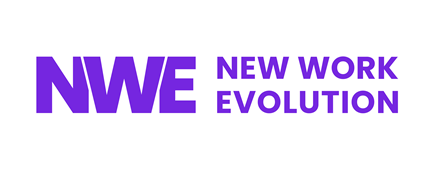The future of work - trends, opportunities and challenges
What can you expect on this page?
The world of work is undergoing profound change. Technological progress, automation and social changes are having an impact on companies, employees and the entire labor market.
But what does this mean for the future? Will there be enough jobs? Which professions will remain and which will disappear? And how can we prepare for these changes?
On this page you will find well-founded answers to the most important questions about the future of work - with current studies and expert opinions.
1. Will future workplaces develop in line with the latest trends?
Answer:
According to the World Economic Forum's Future of Jobs Report 2025, future jobs will evolve strongly in line with current trends. Specifically, it predicts that by 2030:
- 170 million new jobs will be created, which corresponds to around 14% of today's total employment.
- At the same time, around 92 million jobs will be lost due to automation, technological changes and changes in work processes.
- This results in a net increase of around 78 million jobs - which corresponds to an increase of around 7% compared to the current employment figure.
These figures underline the fact that despite the loss of traditional job profiles due to technological progress, a significant increase in new, future-oriented jobs is expected overall. Source: World Economic Forum - Future of Jobs Report 2025
2. Will there be enough good employment opportunities to fulfill the wishes of the population?
Answer:
The availability of good jobs depends heavily on the adaptability of the workforce and the commitment of companies. While some professions are becoming obsolete due to technological developments, new opportunities are emerging in innovative sectors.
- Need for further training:
A McKinsey study (2023) shows that around 50% of today's workforce will need to learn new skills by 2030 in order to remain competitive. - Demographic challenges:
In many industrialized countries, the shortage of skilled workers is creating additional pressure, which must be compensated for by increased training and retraining programs.
There will be sufficient employment opportunities - but only for those who are willing to continuously upskill and acquire new skills. Sources: OECD - The Future of Work Report & McKinsey - Workforce Transitions in an Automated World
3. What role will the state play in ensuring that we can take advantage of the opportunities on offer?
Answer:
In Germany, the state has a central role to play in shaping a future-proof world of work. It must act as an active shaper and supporter to ensure that employees and companies can benefit from the new opportunities. The focus here is on the following measures:
- Targeted investment in further training and retraining:
The German government and the Federal Employment Agency are funding numerous programs to teach digital skills and future-oriented abilities. The aim is to enable employees to continuously adapt to technological change and master the transition into new professional fields. - Expansion of the digital infrastructure:
A modern digital infrastructure is essential to drive innovation and enable companies to make a smooth transition to a digitalized economy. The state is investing in the expansion of broadband networks and the development of future-proof IT structures in order to strengthen Germany as a business location. - Adaptation of legal framework conditions:
Germany is working on updating labor laws and social security systems to promote flexible working models such as home offices and hybrid forms of work. The aim is to ensure the protection of employees while providing the necessary flexibility for companies.
The German state is pursuing an integrated approach that combines education, innovation and social protection. Targeted investment in continuing education, the expansion of digital infrastructure, the adaptation of legal framework conditions and the promotion of research and development are intended to ensure that Germany not only makes use of the opportunities on offer, but also successfully masters the challenges of digital change. Source: Federal Employment Agency - Promotion of further training
4. How does this affect economic performance?
Answer:
In the long term, advancing digitalization and automation will lead to an increase in productivity and innovative strength, which will have a positive impact on the economy. At the same time, the change can lead to challenges in the short term:
- Economic growth:
A PwC study (2023) predicts that global economic output could increase by around 14% by 2030 if companies digitally transform their processes. - Inequalities:
Change can lead to social and regional inequalities in the short term if not all regions and population groups benefit equally from innovations.
Economic performance will improve in the long term if countries and companies successfully implement the digital transformation. However, measures are needed to cushion short-term social inequalities. Source: PwC - Workforce of the Future Report
5. How does this affect the well-being of employees?
Answer:
The changes in the world of work have a direct impact on the well-being of employees. While flexible working models and working from home can improve the work-life balance, the stress caused by constant availability and high performance requirements is increasing at the same time.
- Stress and burnout:
A Gallup study (2022) found that 44% of employees worldwide feel burnt out. - Positive effects:
Flexible working hours can increase wellbeing if implemented correctly by enabling a better work-life balance.
Companies need to invest more in mental health programs and flexible working models to ensure the wellbeing of their employees. Source: Gallup - State of the Global Workplace
6. Is work becoming more and more stressful?
Answer:
Many employees report an increasing level of stress at work. The main reasons for this are:
- Increased digital demands:
Constant accessibility via email, messenger and video conferencing is leading to the removal of boundaries from working hours. - Job insecurity:
The fear of automation and job loss increases psychological pressure. - High performance requirements:
The pressure to constantly deliver innovative and efficient results also contributes to the increase in stress.
Increasing digitalization and the associated constant flow of information are making work more stressful in many industries. It is therefore essential to take measures to reduce stress and promote mental health. Source: Deloitte - Workplace Burnout Survey
7. What can be done against increasing work stress?
Answer:
Both companies and employees can take various measures to counteract increasing work stress:
- Clear separation of work and leisure time:
Introduce fixed working hours and breaks to minimize accessibility outside of working hours. - Flexible working models:
Models such as the 4-day week or hybrid working arrangements can help to reduce stress. - Mental health programs:
Companies should invest in stress management programs, coaching and psychological support. - Promote a positive company culture:
Open communication and a supportive work environment go a long way to reducing stress.
Through a combination of structural changes, flexible working models and targeted health programs, companies can reduce work stress in the long term. Source: Harvard Business Review - Reducing Workplace Stress
8. How can a better balance between work and life be created?
Answer:
A good work-life balance is essential for the long-term satisfaction and productivity of employees. The following measures can help:
- Flexible working hours and home office:
Allow individual adaptation to personal needs and family commitments. - Support with childcare:
Expanding childcare options and promoting parental leave arrangements help to improve the work-life balance. - Equal distribution of care work:
A fair distribution of household and care tasks between men and women is fundamental to a balanced life. - Promotion of leisure activities and recreation:
Companies should provide offers to reduce stress, such as sports programs or leisure activities.
A sustainable work-life balance model requires the commitment of employers, employees and political decision-makers. This is the only way to ensure a healthy balance between professional demands and personal relaxation. Source: OECD - Better Work-Life Balance


